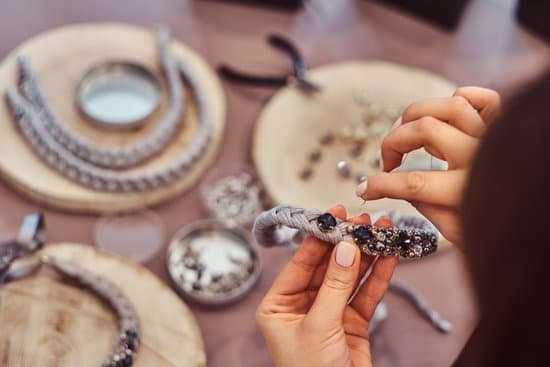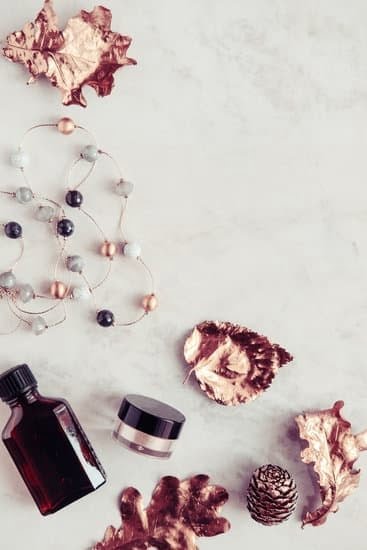Alloy materials in jewelry refers to an assortment of one or more metals which have been melted down and mixed together to form a solid material. This alloy can then be used to create any number of items that make up fine jewelry, such as rings, necklaces and other types of body ornamentation. Alloys are often used in the production of jewelry because they offer various advantages over pure metal items.
These include increased strength, improved corrosion resistance and the ability to create intricate designs with fine details not possible with pure metals. The most commonly used alloys in jewelry making include gold, silver, copper and bronze.
Advantages Of Using Alloy Material In Jewelry Making
Using alloys for creating jewelry makes a great deal of sense from a practical standpoint because it combines two or more different metals, often with entirely different properties than either metal alone. This blend creates a much stronger and durable material that is harder and more resistant to wear than would be possible with any one metal alone.
Alloys also enable jewelers to create pieces which involve complex designs by using metals that can be melted at different temperatures which enables them to easily shape the final product into intricate shapes and designs which would be impossible without this flexible aspect offered by alloys.
Creating Unique Pieces With Alloy Materials
By taking advantage of the unique characteristics found only in alloy materials, talented jewelers can take advantage of their ability to craft truly unique pieces that are both aesthetically pleasing and also extremely durable. Many contemporary pieces involve using combinations of different alloys that weren’t even available until recently such as alternative metals like tungsten, titanium and palladium combined with gold or silver for extra strength and color enhancement.
One example is white gold which combines nickel or palladium for added durability and intense shine so the resulting pieces are far superior compared to plain yellow gold items made from pure gold media.
History of Alloy Jewelry and Its Popularity
Alloy jewelry has been a part of the jewelry industry since ancient times. It is a combination of multiple metals, often with a base metal such as copper or nickel. These can then be combined with other more expensive metals such as gold, silver and platinum to create different types of alloy jewelry.
Examples of these include rose gold, white gold and sterling silver. The composition of the alloy will affect the color and properties of the metal which gives it its individual character.
The use of alloys can help to maximize the value for money when buying jewelry. By using an alloy you get more bang for your buck as less precious metal is required to make a piece, yet you still get all the visual and physical benefits found in more expensive metals without breaking the bank. This versatility makes alloyed jewelry popular amongst many people looking for beautiful pieces at a good price point.
These days, an array of alloys are widely used by designers and jewelers alike to create unique and eye-catching pieces that offer maximum style but don’t compete with higher end pieces in terms of cost or design complexity. Alloy jewelry is also popular because it tend to be glossy and appear more stylish than traditional metals due to their mix components interacting differently when light hits them creating interesting effects.
The fact that they don’t tarnish or cause skin reactions like some purer forms of metal also make them attractive choices over time too.
Different Types of Alloy Materials Used In Jewelry
Alloy material is used commonly in jewelry, not because of its strength or durability, but as a way to create unique styles and color combinations. It involves blending together different metals to create an entirely new metal.
When metals such as copper, nickel, and zinc are blended together, they form alloys like brass and bronze which can be used in a variety of jewelry settings and designs. As well as providing distinctive appearances to jewelry pieces, alloy metal also allows producers to work with materials that can withstand temperature changes and are often more affordable than solid gold or silver.
A key benefit of using alloy metal in jewelry making is its flexibility when it comes to customization. Designers can combine various metals into one alloy material or use the individual component parts separately for different effects.
For example, copper alloy is often combined with other metals like silver and gold plating to prove highly decorative accents for earrings and pendants. Brass on the other hand is paired with stones such as sapphires and topaz for classic yellow gold jewelry pieces.
Nickle alloys are very popular amongst luxury designer brands due to their affordability compared to solid gold. Nickle alloys can result in some striking color combinations that look just as valuable as true gold or gemstones.
This makes them perfect for large statement pieces where price could be prohibitive if they were made completely from precious metals like gold or silver. Popular combinations often include silver-nickel allows which offer muted white tones that look stunning set against diamonds or icy blue topaz gems.
Advantages of Using Alloy in Making Jewelry
Alloy materials are components or mixtures composed of two or more different types of metallic elements. Alloys are extremely popular in jewelry manufacturing due to their unique properties, such as strength, malleability and resistance to corrosion. This article will explore the advantages that come with using alloy in making jewelry pieces.
One of the primary benefits of using an alloy material for making a piece of jewelry is its cost-effective nature. Alloy materials are generally much cheaper than precious metals and other traditional metals; consequently, manufacturers can keep prices downby utilizing this form of metal for both custom and mass-produced pieces. Additionally, alloy materials last for a very long time; as a result, pieces created from this kind of metal can last generations if taken care of correctly.
Another great advantage that comes with creating jewellery pieces out of alloy is its versatility. Alloys can be combined together to create coins or pendants that have intricate designs on them.
Furthermore, these components can also be treated with various compounds during the creation process to add color or texture to give jewelry a personalized touch. It’s also worth noting that there are many different types of alloys available on the market; thus, manufacturers are able to choose whichever one fits their design needs best and customize it as necessary with enamels or plating so users can match it to their personal style more easily.
Lastly, it’s important to mention that having accessories made from alloy means better safety for the wearer – specifically when wearing necklaces or earrings that may have dangling elements connected to them – since this type of material doesn’t put stress on delicate parts like stones may do over time.
Moreover, most alloys utilized by companies in jewelry-making processes aren’t harmful to skin – they won’t cause any allergies nor infections – meaning everyone who wears an accessory consisting mainlyof alloy should feel secure at all times while wearing said item regardless if it’s fragile or not.
Considerations Before Buying Alloy Jewelry
Alloy jewelry is a popular choice among many consumers when it comes to making purchase decisions. Alloy jewelry is a great combination of metals or alloys, with the elements being proportionately blended to create a particular look and feel. Alloys may include precious metals such as gold, silver, brass, copper and nickel, plus more exotic materials like palladium or titanium.
The process of combining these metals creates an entire world of possibilities for design and style when it comes to jewelry-making. When purchasing alloy jewelry, there are several important factors that should be considered in order to ensure you make the best decision for your purchase.
First and foremost, it is essential to understand the basic composition of the alloy. While differences between alloys can be subtle in terms of appearance, there can be major differences in terms of quality and cost that must be taken into account when selecting the right piece for your needs.
Different alloys will naturally have different levels of strength, durability and flexibility depending upon the mix-in properties that were used during their production. Therefore a buyer should pay special attention to what kind of metal compositions make up the alloy they wish to purchase before going any further with their decision making process.
Another factor in choosing an alloy jewelry is its plating finish. Jewelry made out of alloys may come with different types of finishing such as gold plated or rhodium plated pieces as well as other finishes such as matte or bright polish.
Many prefer brighter matte colors because these tend to hold their shine longer than those pieces with bolder colors which may fade quickly due to wear and tear over time. It is therefore very important to ask the jeweler about the type used in manufacturing your chosen piece so you can maintain its beauty was allowing its protective layer stay intact throughout its lifespan.
Finally, buyers should also keep cost in mind while making purchases specifically because alloy jewelry tends to offer much less price stability compared with precious metal pieces. This is mainly due to its production process which involves mixing multiple metals into one final product whereas other forms are composed from pure materials alone avoiding frequent fluctuation prices (such as those caused by supply/demand).
It is thus advised that customers know what kind of budget they wish to adhere too before committing themselves financially into a potentially costly purchase knowing full well what would lie ahead once they commit themselves towards doing so.
How to Care For and Protect Alloy Jewelry
Alloy material in jewelry is essentially a combination of two or more metals, such as copper, zinc and tin. The presence of these metals gives the alloys their strength and durability, making them an ideal choice for jewelry pieces.
Different manufacturers have different ratios, which create unique properties in the final product. A lot of alloy materials mimic other precious metals like gold and silver; however, because alloy materials are considered to be non-precious metals, they tend to be less expensive than pure precious metals.
Caring for and protecting alloy jewelry is important when it comes to keeping your items looking great for years to come. As with any type of jewelry or accessory material, regular maintenance such as keeping items dry and cleaning frequently is a must in order to keep the item looking like new. You should also store your alloy jewelry properly by keeping it stored separately from other jewelry items to avoid unnecessary wear or damage.
Additionally, you may want to consider occasionally using a jewelry cleaner preferably specific ones formulated for alloy materials or even a non-abrasive cleaning cloth when needed. The use of these products will help protect against tarnish buildup on the pieces since oxidation can occur faster due to the presence of two or more metals being combined together.
To prevent damage or scratches on your alloy jewelry pieces when handling them, it’s best to use either rubber gloves or a soft cloth whenever possible so that no additional oils from your hands get transferred onto the items surface. Doing this will help minimize tarnish over time as well as protecting against discoloration and blemishes that can occur over time from everyday wear and tear.
To limit possible accidental dings and dents caused by dropping them within hard surfaces like tile floors, storing your pieces within protective pouches that are made for jewelry storage is always recommended too. Taking good care of your alloy pieces will not only keep them looking beautiful but also help maximize their lifespan making them long lasting fun accessories now and into the future.
How To Identify Authentic Alloy Jewelry
Alloy material in jewelry is a mixture of two or more metals combined together to create a new metal with specific characteristics. This often happens when a metalsmith wants to enhance one metal while softening another. Usually, the metals are melted together and used in various pieces such as rings, pins, earrings, attention-catching pendants and bracelets. Different alloys created can be gold-plated sterling silver, rose gold over silver or even several metals combined like brass, zinc and copper.
When dealing with alloy material for jewelry, it is essential to make sure it is authentic. One way to determine this is to inspect the item for any signs of discoloration that may have occurred from substandard practices in making the alloy material.
If there are strange green or black markings on the surface of the metal that was not intended by its creator then it could be an indication that it is not genuine. Another way is to compare different colors and textures found with other pieces crafted from alloy material including those at the local jewelry store for comparison purposes.
The third way you can identify authentic alloy jewelry is by using hardness tests where professionals use tools designed specifically for testing metal properties such as Hardness testers, Tensile testers or Rockwell scales which are useful if there’s a need to determine how well an item holds up under stress or rubbing against other items.
These types of tests can help determine what type of metals were used in forging an item as well as give an insight into its resistance capabilities and overall level of quality craftsmanship involved in creating it.
What To Look for When Shopping for Alloy Jewelry
Alloy material is a blend of two or more metals blended together to make one substance, typically used to improve the look and durability of jewelry. Alloy materials are popular in the production of jewelry because they are low-cost, simple to create, easy to work with, and often light weight.
The most common alloy material used in jewelery today is gold-filled alloy, which combines base metal like brass and nickel with 14kt or 18kt gold creating an attractive and durable layer of gold over the top. Copper alloys are also popularly used which is copper mixed with zinc or tin often resulting in improved color, strength, hardness, heat resistance and electrical conductivity.
When shopping for alloy jewelry it’s important to factor in your lifestyle, skin sensitivity, budget preferences as well as environmental concerns. Firstly consider what you’ll be wearing the jewelry for: day outings, a night out on the town or something more permanent such as an engagement ring. Different materials can withstand different conditions better than others so knowing how frequently you’ll be wearing the piece will influence your choice.
For those with allergies or sensitive skin issues opt for hypoallergenic alloys such as Rhodium plated sterling silver or palladium based white gold alloys as these provide added protection to those with reacted sensitivities compared to traditional metals like pure sterling silver and yellow gold. Price can often be a deciding factor when selecting jewellery so take into account the cost of your desired alloy material factoring in durability ratings from manufacturers before making any purchase decisions.
Finally environmental concerns may play a role in choice of metal use due to responsibly sourced supplies not using refiners involved in controversial practices such as ‘conflict minerals’.
Overall when considering buying jewellery made from alloy materials there’s something available suitable for every individual regardless of budget or lifestyle needs including colour preference (due to wide range of colours possible through mixing different metals). With a wide variety of options on the market plus increasing public awareness on responsible sourcing make sure you do your research before any purchase contracts are signed.
Popular Styles of Alloy Jewelry
Alloy is the combination of two or more metals to create a material that has unique physical and chemical properties. Alloy is often used in jewelry manufacturing to create durable, cost-effective jewelry pieces. Alloys are also known as base metals in some circles, as they are usually lighter-weight and less expensive than precious metals such as gold and silver.
Alloy materials commonly used in jewelry making include sterling silver, nickel, brass, aluminum, and titanium. Sterling silver is an alloy made from at least 92.5% pure silver with the addition of other metals such as copper or zinc for strength and durability. It is the most popular choice for high-end jewelry pieces because it has excellent ductility and can hold intricate details without breaking or becoming too soft during processing.
Nickel alloys are a combination of nickel and other metals such as iron or manganese. This alloy is highly corrosion resistant and also very strong, making it a great option for pendants, necklaces, earrings, and more.
Brass alloys are composed of at least 50% copper with the addition of zinc to make them harder while maintaining their malleability. Brass jewelry has a rich golden color that doesn’t fade even after years of wear and tear but can be susceptible to tarnish due to its composition.
Aluminum alloys have became increasingly popular in recent years due to their hypoallergenic properties; these alloys are lightweight yet very strong which makes them perfect for items like rings or pendants that will be worn frequently over long periods of time.
Titanium alloys are created by combining titanium with other elements like vanadium and aluminum and are very hard yet light enough to not cause discomfort when wearing them for extended periods. Titanium alloys offer superior scratch resistance making them ideal for luxury pieces such as engagement rings or watches.
No matter what type of metal alloy you choose for your next piece of jewelry , you can be sure that it will look exquisite on you. From timeless sterling silver pieces that perfectly match any wardrobe , to titanium-alloyed watches avant-garde brass necklaces , there’s something beautiful out there to suit everyone ‘s style.
Variety of Alloy Jewelry Finishes
Alloy material in jewelry is simply a combination of two or more metals. It is when a base metal such as copper, zinc,nickel and tin are mixed together to make one metal element with different metallurgical properties. In other words, alloy material in jewelry allows us to manipulate the physical and chemical characteristics of pieces of jewelry to create something that is strong, durable and aesthetically pleasing.
One of the primary benefits of alloy material in jewelry crafting is that it allows for variety and flexibility in design; it adds different colors and patinas, changes the hardness or malleability of the piece, or even adds unique physical details such as texture. Different alloys provide different types of finishes for jewelry making ranging from a shiny gold finish to a matte silver finish.
For example, bronze alloys give off a brownish-gold appearance while copper can be used to provide reddish hues which add depth and dimension to any piece. Gold plated alloys like brass give off yellow sheen that can provide an intriguing contrast to certain colors such as pink stones.
The range of alloys available allow for endless possibilities when creating beautiful pieces of jewelry. The materials can be combined into many colors/shades such us rose gold – which combines gold with copper – grey gold – combining palladium and white gold – or even blackened silver with an oxidized finish which makes sparkles stand out brighter against dark tones.
All these combinations bring together physical properties allowing artisans to work around certain color palettes while also altering weight and cost considerations among other interesting factors betailed by what they pick as their alloy material; thus ultimately creating one-of-a-kind custom designs true to the artist’s vision.
How Alloy Jewelry Can Make a Statement
Alloy material jewelry is any type of jewelry that is composed of two or more metals melted together to create a new metal. This type of jewelry often has unique characteristics such as increased strength, heightened durability, better color representation, and greater resistance to tarnishing. It’s a great way to make statements with your wardrobe and push the boundaries of fashion.
Many alloy materials are used in the production of everyday pieces such as wedding bands and engagement rings. The most common alloy used for this type of product is known as white gold which consists of a mixture of pure gold and silver with added nickel or palladium for stability. White gold is popular due to its ability to reflect light well while still maintaining its strength and durability in comparison to other metals and metals combined together.
Another option when it comes to alloy material jewelry is tungsten carbide which is another mixture made up mainly from tungsten and carbon atoms. It has become increasingly popular among younger generations because it’s extremely durable, scratch-resistant, and easy to shine and upkeep. Tungsten carbide also creates a unique appearance with its grayish toned hue, so if you are going for something different than traditional metals this may definitely be an option worth exploring.
In conclusion, alloy material jewelry designers can really get creative with their work by mixing various alloys such as white gold or tungsten carbide together resulting in works that dimensionally stand out from traditional pieces more commonly seen in the market today. Not only do these pieces look stunning but they will last much longer because they have been created with various combinations that make them more robust against wear and tear over time.
Conclusion
Alloy materials in jewelry are combinations of metals that combine to create a stronger and more durable material than either metal alone. Common alloy materials used are copper, nickel, and brass, although some companies make their own proprietary alloy mixes that may contain other metals. It is a great way to achieve the desired look while including the most desired type of metal in pieces due to the cost involved.
One of the main benefits of investing in alloy jewelry is cost savings. Alloys usually use cheaper metals that can then be combined for an overall lower price point for the same high quality end results as using a more expensive metal alone.
This makes it easier to purchase items like rings or necklaces without needing a significant investment. The cost savings can also extend to maintenance and upkeep as these items typically require less attention due to their increased durability when compared to less-durable metals such as silver or gold.
Due to its advantages, many people choose alloy material when investing in jewelry; from rings and earrings through necklaces, bracelets , bangles and beyond. Its versatility lends itself better to customizations – helping customers create something truly unique – whilst keeping costs down on more intricate pieces that involve multiple metals being fused together. The resulting hardy yet beautiful product is sure to satisfy any customer’s needs with ease.

Welcome to my jewelry blog! My name is Sarah and I am the owner of this blog.
I love making jewelry and sharing my creations with others.
So whether you’re someone who loves wearing jewelry yourself or simply enjoys learning about it, be sure to check out my blog for insightful posts on everything related to this exciting topic!





